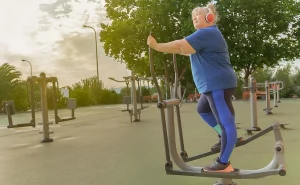A $2.5 billion plan to fight the coronavirus outbreak was sent by the White House to Congress on Monday evening, as countries around the world raced to stem outbreaks of “untraceable” cases of the virus.
The money would be used for vaccines, treatment and protective equipment, the Associated Press reported. While $1.25 billion would be new funding, the request also asks that $535 million be shifted over from an Ebola preparedness account. The package was announced as financial markets plunged on Monday, with the Dow Jones Industrial average dropping 1,000 points as fears of a COVID-19 pandemic began to intensify.
As of Monday, the U.S. Centers for DIsease Control and Prevention website was reporting that 53 Americans have now tested positive for coronavirus, a jump up from the 35 reported last week. The new cases were detected in Americans who were evacuated from the Diamond Princess cruise ship in Japan early last week. All of those evacuees are under quarantine in the United States.
Clusters of cases arising in South Korea, Italy and Iran with no clear ties to outbreak’s epicenter in China have heightened concerns about local, self-sustaining epidemics and a global pandemic. In a pandemic, outbreaks occur on more than one continent. As of Tuesday, there were more than 80,000 cases of COVID-19 and nearly 2,700 deaths globally.
“We are worried about the situation in the Islamic Republic of Iran and in Italy,” Tedros Adhanom Ghebreyesus, director of the World Health Organization, said Monday.
“Less than two months ago, the coronavirus was completely unknown to us,” Ghebreyesus said. “The past few weeks have demonstrated just how quickly a new virus can spread around the world and cause widespread fear and disruption.”
As reported Tuesday by Associated Press, the list of countries with burgeoning case counts includes:
- South Korea. Total cases of COVID-19 have risen from just 28 last week to 977 by Tuesday. Eleven people have died. Most of the South Korean cases are centered in the southern city of Daegu, and more than half are concentrated among members of the Shingeongji religious group. The president of South Korea has put the country on its highest alert, ordering officials to take “unprecedented and powerful” actions to curb the spread of coronavirus. These actions include closing schools and public transportation temporarily. Officials said the re-opening of schools following a mid-term break will be delayed until March 9. Meanwhile, the United States issued its highest travel alert for South Korea on Monday, urging all American to avoid non-essential travel to the Asian country.
- Italy. Officials announced Monday that the number of new cases reported jumped to 283, with seven deaths. Most of the cases have been reported in the northern Lombardy region of Italy, an area that includes Milan. Local officials have sealed off 10 towns where cases have been reported. Meanwhile, officials in Venice halted the city’s annual Carnival, an international gathering that draws people from all over the world, after three cases of coronavirus were reported there. Italy now has the largest number of cases outside Asia.
- Iran. So far, Iranian officials say 95 cases have been identified and 15 people have died. It’s thought that a Chinese worker who’d returned to the Iranian city of Qom may have been the source for the Iranian cases there, although cases are arising elsewhere.
Minnou Mohraz, a member of the National Committee for Infectious Diseases at Iran’s Ministry of Health, said the outbreak “started in Qom and has reached other cities in the country like Tehran, Babol, Arak, Isfahan, Rasht and other cities due to people traveling. There is a possibility that it exists in all cities across the country.”
- Singapore. Five coronavirus case clusters have also emerged in that country, bringing the total number of cases to over 89.
On Tuesday, a hotel in the Canary Islands was quarantined after an Italian doctor who hails from the northern region of that country tested positive for the virus, the AP reported.
One expert said that the mild nature of most cases of COVID-19 is making the virus tough to spot and contain. People with symptoms that might simply be taken for cold or flu may be transmitting the virus to others, explained Dr. Amesh Adalja, of the Johns Hopkins Center for Health Security in Baltimore.
“If that’s the case, all of these containment methods are not going to work,” Adalja told the AP. “It’s likely mixed in the cold and flu season all over the place, in multiple countries.
By Monday, the total number of cases within mainland China had reached more than 77,658, the AP reported, with 2,663 deaths. The rate of new cases is slowing in China, suggesting that draconian efforts to contain the outbreak there are working.
On Tuesday, China’s top political body approved a ban on the consumption and illegal trade of wild animals, which some experts believe triggered the coronavirus outbreak, CNN reported.
Cruise ship cases spur uptick in U.S. numbers
In the meantime, the number of coronavirus cases among Americans reached 53 as of Monday, according to the U.S. Centers for Disease Control and Prevention website, as more passengers evacuated from a quarantined cruise ship in Japan have tested positive for the virus.
However, nearly everyone else evacuated in the special flights from Wuhan have finished their 14-day quarantine.
“We never expected that we would catch every single traveler with novel coronavirus returning from China, given the nature of this virus and how it’s spreading,” Dr. Nancy Messonnier, director of the National Center for Immunization and Respiratory Diseases, said during a Friday media briefing. “That would be simply impossible.”
Evacuation and quarantine
Instead, the measures being taken are buying health officials time for a response before the virus gains a foothold in the United States, she explained.
Among the 400 Americans who were on board the Diamond Princess cruise ship, roughly 300 were evacuated a week ago and are under quarantine in the United States.
For the patients who have been sent to the University of Nebraska Medical Center, the facility has a biocontainment unit and is specially designated to treat highly infectious diseases, CNN reported. The unit successfully treated three patients for Ebola in 2004.
More than 100 American passengers remain in Japan, and U.S. health officials have said that they will not be allowed to return home for at least two more weeks.
Earlier this month, the United States began to bar entry to any foreigners who have recently traveled to China. U.S. citizens who have recently traveled to the Hubei province of China, where Wuhan is located, will be quarantined for up to 14 days, U.S. health officials said. U.S. citizens who have recently traveled to other parts of China will face health screenings and voluntary quarantines of up to 14 days.
The temporary entry ban applies to foreign nationals, with the exception of relatives of citizens and permanent residents.
More information
The U.S. Centers for Disease Control and Prevention has more on the new coronavirus.
Source: HealthDay
Copyright © 2025 HealthDay. All rights reserved.

















